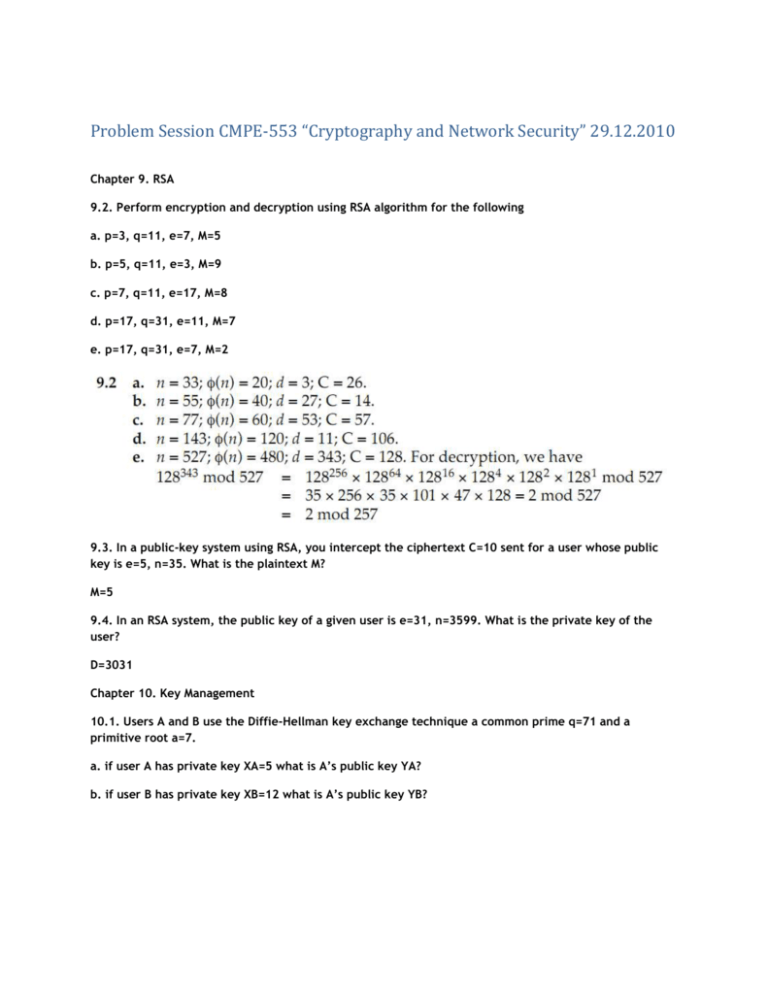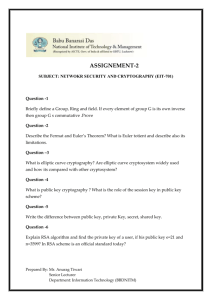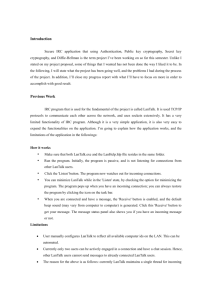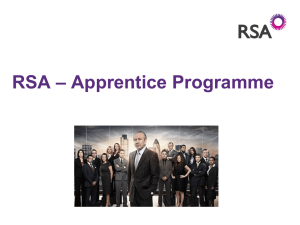Problem Session CMPE-553 “Cryptography and Network Security”
advertisement

Problem Session CMPE-553 “Cryptography and Network Security” 29.12.2010 Chapter 9. RSA 9.2. Perform encryption and decryption using RSA algorithm for the following a. p=3, q=11, e=7, M=5 b. p=5, q=11, e=3, M=9 c. p=7, q=11, e=17, M=8 d. p=17, q=31, e=11, M=7 e. p=17, q=31, e=7, M=2 9.3. In a public-key system using RSA, you intercept the ciphertext C=10 sent for a user whose public key is e=5, n=35. What is the plaintext M? M=5 9.4. In an RSA system, the public key of a given user is e=31, n=3599. What is the private key of the user? D=3031 Chapter 10. Key Management 10.1. Users A and B use the Diffie-Hellman key exchange technique a common prime q=71 and a primitive root a=7. a. if user A has private key XA=5 what is A’s public key YA? b. if user B has private key XB=12 what is A’s public key YB? 10.2. Consider a Diffie-Hellman scheme with a common prime q=11 and a primitive root a=2. a. show that 2 is a primitive root of 11 b. if user A has public key YA=9, what is A’s private key XA? c. If user B has public key YB=3, what is the shared secret key K? 10.4. In 1985, T. ElGamal announced a public-key scheme based on discrete logarithms, closely related to the Diffie-Hellman technique. As with Diffie-Hellman, the global elements of the ElGamal scheme are a prime number q and a,a primitive root of q. A user A selects a private key XA and calculates a public key YA as in Diffie-Hellman. User A encrypts a plaintext M<q intended for user B as follows: 1. Choose a random integer k such that 1<=k<q 2. Compute K=(YB)k(modq) 3. Encrypt M as the pair of integers (C1, C2) where C1=ak(modq), C2=KM(modq) User B recovers the plaintext as follows: 1. Compute K=(C1)XB(modq) 2. Compute M=(C2*K-1)modq Show that the system works; that is, show that the decryption process does recover the plaintext. 10.5. Consider an ElGamal scheme with a common prime q=71 and a primitive root a=7. a. If B has public key YB=3 and A chose the random integer k=2, what is the ciphertext of M=30? b. If now A chooses a different value of k, so that the encoding of M=30 is C=(59, C2), what is the integer C2? Chapter 11. 11.6. Using an encryption algorithm, construct a one-way hash function. Consider using RSA with a known key. Then process a message consisting of a sequence of blocks as follows: Encrypt the first block, XOR the result with the second block and encrypt again, and so on. Show that this scheme is not secure by solving thee following problem. Given a two-block message B1, B2, and its hash RSAH(B1,B2)=RSA(RSA(B1)+B2) And given arbitrary block C1, choose C2 so that RSAH(C1, C2)=RSAH(B1,B2) Chapter 12. 12.4 How 4-byte word a1a2a3a4 is interpreted in computers with little-endian and big-endian architectures? Big-endian: a1*2^24+a2*2^16+a3*2^8+a4 Little-endian: a4*2^24+a3*2^16+a2*2^8+a1 How MD5 (assuming a little-endian architecture) addition operation (X+Y) would be carried out on a big-endian machine?











